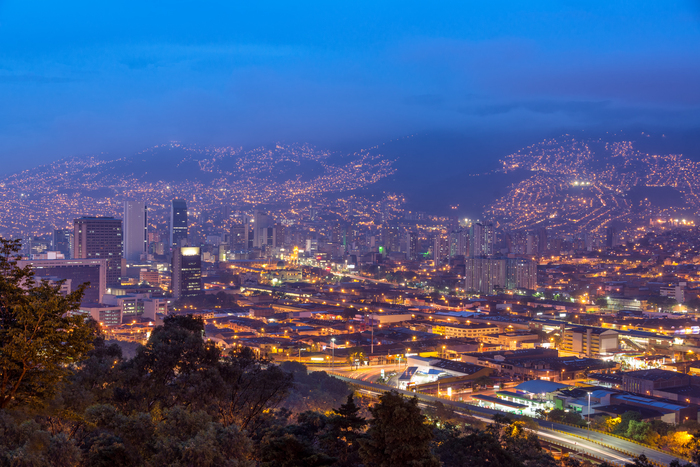- Beyond the Headlines – The Truth About Safety in Medellín
- The Medellín of Yesterday vs. Today: A Story of Unprecedented Transformation
- Navigating the City: A Neighborhood-by-Neighborhood Safety Guide
- Top 11 Practical Safety Tips for Your Medellín Trip
- A Special Case: Staying Safe During the Feria de las Flores
- Frequently asked questions (FAQ)
- Conclusion: What’s the Final Verdict on Medellín’s Safety?
Beyond the Headlines – The Truth About Safety in Medellín
Welcome! If you’re asking, “Is Medellín safe?” you’re asking the right question. For decades, the name Medellín was synonymous with danger, a reputation forged in a turbulent past that still echoes in headlines and TV shows. But what is the reality on the ground today, in 2025? Can you safely wander its vibrant streets, ride its innovative cable cars, and soak in the culture of the “City of Eternal Spring”?
The answer is a resounding yes, but with important caveats. This is not a simple yes or no question. The truth about safety in Medellín is nuanced, complex, and requires a deeper understanding than most articles provide. That’s why this ultimate guide was created.
We will dive deep into the city’s incredible transformation, explore the safest neighborhoods for tourists, and give you actionable, on-the-ground safety tips that go beyond generic advice. Our goal is to replace fear with knowledge, allowing you to experience the magic of this resilient city with confidence and awareness. Forget the old stereotypes; let’s discover the real Medellín together.
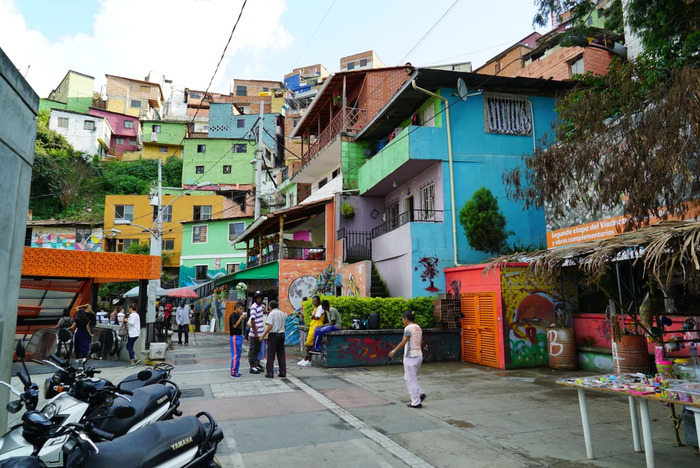
The Medellín of Yesterday vs. Today: A Story of Unprecedented Transformation
To truly understand the safety situation in Medellín today, we must first acknowledge its past. The city’s journey from the world’s most dangerous city to an award-winning hub of innovation is one of the most inspiring urban stories of the 21st century.
A Brief Look at the Dark Past: Understanding the 1980s and 90s
It’s impossible to discuss safety in Medellín without mentioning the shadow of the past. During the 1980s and 90s, the city was the epicenter of Pablo Escobar’s powerful drug cartel. This era was marked by violence and fear, leaving deep scars on the city and cementing a global reputation for danger. This is the history that fuels the question, “Is Medellín, Colombia safe?” even today.
However, clinging to this outdated image is like judging a grown adult by their childhood photos. The city has undergone a profound metamorphosis since those dark days. The people of Medellín, known as Paisas, have worked tirelessly to reclaim their home, focusing on community, education, and innovation to build a brighter future.
The “Medellín Miracle”: How Social Urbanism Changed Everything
The turning point for Medellín was its revolutionary focus on “social urbanism.” Instead of just policing the problem, the city invested heavily in its poorest and most neglected neighborhoods (the comunas). This brilliant strategy brought dignity, opportunity, and safety from the inside out.
The most iconic symbols of this transformation are:
- The Metrocable: A system of cable car gondolas integrated into the public transport system. It connects the isolated hillside comunas with the economic center in the valley, giving residents access to jobs and education. It’s a symbol of connection and social inclusion.
- The Outdoor Escalators of Comuna 13: Once the city’s most dangerous neighborhood, Comuna 13 is now a vibrant tourist destination. The city installed a series of giant outdoor escalators to ease the steep climb for residents, a project that has become a powerful symbol of hope and state presence.
- Library Parks (Parques Biblioteca): These are stunning architectural complexes that combine libraries, community centers, and green spaces, intentionally built in the city’s most underserved areas.
These projects did more than just look good; they fundamentally changed the social fabric of the city, fostering a sense of community pride and hope that directly contributes to improved safety today.
The Statistics: What Do the Numbers Say About Crime in Medellín in 2025?
While personal experiences are important, it’s also helpful to look at the data. Homicide rates in Medellín have plummeted by over 95% since the early 1990s. Today, its homicide rate is often comparable to or even lower than some major U.S. cities like Baltimore or St. Louis.
However, it’s important to be realistic. The primary safety concern for tourists is not violent crime, but petty crime. Robberies and street theft, often targeting unsuspecting foreigners, are the most common issues. This is why understanding how safe is Medellín for tourists involves a focus on situational awareness rather than a fear of pervasive violence. Official sources like the U.S. Department of State’s Colombia Travel Advisory provide a broader country-wide context, but on-the-ground reality in Medellín’s tourist zones is often much safer than these national advisories might suggest.
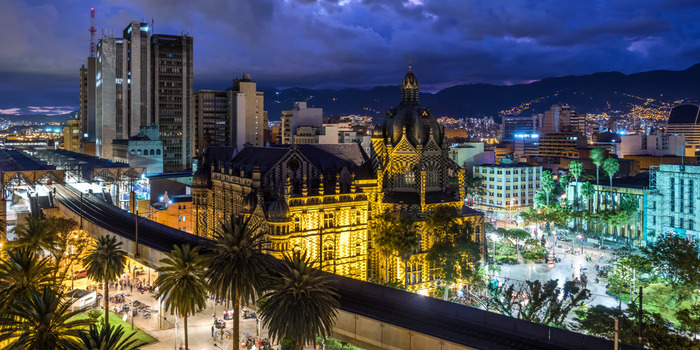
Navigating the City: A Neighborhood-by-Neighborhood Safety Guide
Your experience of safety in Medellín will largely depend on where you are. Like any major metropolis, it’s a patchwork of different districts, each with its own character and safety profile.
The Safest Neighborhoods in Medellín for Tourists
For travelers, sticking to the well-trodden and well-policed tourist zones is the key to a safe and enjoyable trip.
El Poblado: The Upscale Hub
When people ask, “Is El Poblado, Medellín safe?“, the answer is a definitive yes. This is the city’s most upscale and tourist-centric neighborhood, home to the best hotels, restaurants, and nightlife around the famous Parque Lleras. You’ll find a heavy police presence here, and it’s generally very safe to walk around, even at night.
However, its popularity also makes it a prime target for opportunistic thieves. The biggest risks in El Poblado are phone snatching and drink spiking in bars. While safe, it’s a place where you must remain vigilant precisely because you might be tempted to let your guard down.
Laureles-Estadio: The Authentic & Safe Alternative
Just west of the city center, Laureles is a favorite among expats and travelers looking for a more authentic, less touristy vibe. It’s a flatter, more walkable middle-class neighborhood with a fantastic food scene and a more relaxed atmosphere than El Poblado. It is widely considered one of the safest and most pleasant areas to stay in Medellín. You can comfortably walk around during the day and explore its circular streets, parks, and charming cafes.
Envigado & Sabaneta: The Family-Friendly Suburbs
Technically separate municipalities but seamlessly integrated into the southern part of the city, Envigado and Sabaneta are known for their safety and high quality of life. While they have fewer tourist attractions, they offer a peaceful, local experience and are considered extremely safe, making them popular with long-term residents and families.
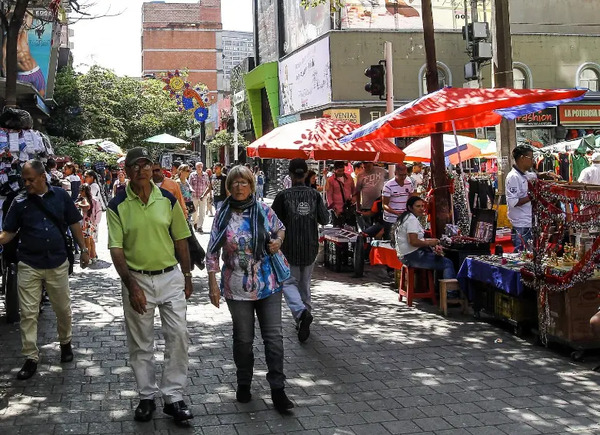
Neighborhoods Requiring More Caution
El Centro (Downtown): A Must-Visit, But Be Aware
El Centro is the historical and commercial heart of Medellín. It’s home to Plaza Botero, the Museum of Antioquia, and countless shops. You absolutely should visit it during the day. It’s bustling, energetic, and a fantastic place to experience the city’s raw energy.
However, El Centro is also known for pickpocketing and street scams. Keep your phone out of sight, wear your backpack on your front, and be aware of your surroundings. After business hours, especially after dark, it’s best to avoid walking around El Centro and use a ride-sharing app to get to your destination.
Understanding the “Comunas”: The Story of Comuna 13
The term comuna simply refers to an administrative district. While Comuna 13 is now a very safe and inspiring tourist destination along its designated graffiti tour route, this safety does not automatically extend to all other comunas, especially those on the city’s periphery that see no tourism. As a traveler, there is no reason to venture into these residential areas. Stick to the known tourist paths.
Top 11 Practical Safety Tips for Your Medellín Trip
Now for the most important part of this guide. Answering “How safe is Medellín Colombia?” is less about the place and more about your actions. By following these practical tips, you can drastically minimize your risks and have an incredible time.
1. “No Dar Papaya”: Understanding the Golden Rule of Colombia
This is the single most important safety tip. “No dar papaya” literally means “don’t give papaya,” and it’s a famous Colombian saying that means don’t make yourself an easy target. It’s a philosophy of personal responsibility for your safety.
What does it mean in practice?
- Don’t flash your expensive new iPhone on a busy street.
- Don’t wear flashy, expensive jewelry.
- Don’t walk alone at 3 AM, drunk, in an unfamiliar area.
- Don’t leave your bag unattended on the back of a chair.
Almost every instance of petty crime against tourists happens because they were “giving papaya.” Be mindful, not fearful.
2. Smartphone & Valuables Savvy
Your smartphone is the #1 target for thieves.
- On the street: Avoid walking while texting or navigating with your phone out in the open. Step into a shop or cafe to check your map.
- In cafes/restaurants: Never leave your phone on the table. Keep it in your pocket or a zipped bag.
- Valuables: Only carry what you need for the day. Leave your passport, extra credit cards, and excess cash locked in your accommodation.
3. Transportation Safety: Ride-Sharing Apps are Your Best Friend
While official taxis are generally fine, using ride-sharing apps like DiDi, Cabify, or Uber is the safest and most convenient way to get around, especially at night.
- You have a digital record of the driver and the route.
- The price is fixed, so there’s no need to negotiate.
- It avoids any potential confusion with directions.
4. Nightlife Safety: Partying Smart in El Poblado
Parque Lleras and the Provenza area are fantastic for nightlife, but this is where you need to be most vigilant.
- Watch your drink: Never leave your drink unattended to avoid the risk of it being spiked.
- Go out in a group: Stick with friends and look out for each other.
- Don’t accept drinks from strangers.
- Be wary of being over-friendly: Scopolamine (a drug used to incapacitate victims) is a real, though rare, risk. It’s often administered by overly friendly strangers in nightlife settings. Trust your gut.
5. Solo Female Travel in Medellín: Is it Safe?
This is a very common question. Is Colombia safe for solo female travelers? For many, the answer is a resounding yes. Medellín is a popular destination for solo women, who often praise the friendliness of the locals. All the tips in this article apply, but with extra emphasis:
- Be extra cautious at night. Always use ride-sharing apps instead of walking alone.
- Avoid telling strangers where you are staying.
- Be firm in deflecting unwanted attention. A simple, firm “no, gracias” is usually sufficient.
- Join group tours and activities to meet other travelers.
6. Scams to Watch Out For
Be aware of common street scams:
- The “Mustard” Scam: Someone “accidentally” squirts a substance (like mustard or ketchup) on you. While their “helpful” friend tries to help you clean it up, they pickpocket you. If this happens, firmly say no and walk away immediately.
- Fake Police: Individuals posing as police officers may ask to “inspect” your money for counterfeit bills. They will then swap it for fakes. Never hand your money to anyone on the street. Ask to see their identification and insist on going to a police station.
7. Learning Basic Spanish Phrases
You don’t need to be fluent, but knowing a few basic phrases will go a long way. It shows respect, makes interactions smoother, and can help you in a tricky situation. Phrases like “No, gracias” (No, thank you), “¿Cuánto cuesta?” (How much is it?), and “La cuenta, por favor” (The bill, please) are incredibly useful.
8. ATM and Money Safety
- Use ATMs located inside banks, large supermarkets, or shopping malls. Avoid standalone ATMs on the street, especially at night.
- Cover the keypad when you enter your PIN.
- Don’t carry large amounts of cash.
9. “What to Avoid in Medellín”: A Quick Checklist
- Don’t walk alone at night in quiet, unlit areas.
- Don’t flash your valuables.
- Don’t get into unmarked taxis.
- Don’t talk about sensitive political or historical topics (like Escobar) unless a local brings it up first.
- Don’t buy drugs. This directly funds the very criminal elements the city has worked so hard to overcome and puts you at extreme risk.
10. Trust Your Instincts
This is the most important rule of travel anywhere in the world. If a situation feels uncomfortable or a person seems suspicious, remove yourself from it immediately. Your intuition is your best guide.
11. Get Travel Insurance
Before you even ask “Is it safe to travel to Medellín, Colombia?“, you should have travel insurance. It provides a crucial safety net for everything from lost luggage to medical emergencies. Reputable companies like World Nomads offer comprehensive coverage for travelers.
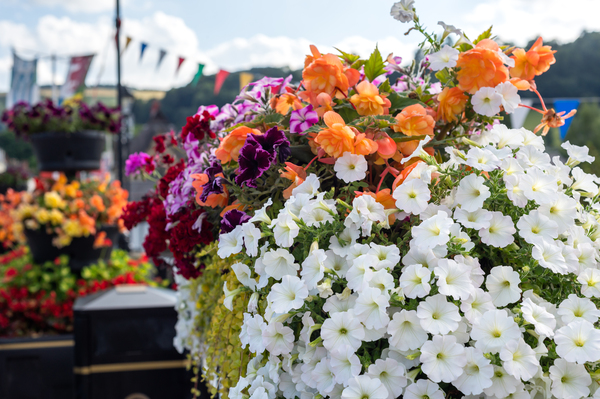
A Special Case: Staying Safe During the Feria de las Flores
The Feria de las Flores (Festival of Flowers) is without a doubt the most magical time to be in Medellín. Every August, the city erupts in a vibrant celebration of Paisa culture, with parades, concerts, and millions of flowers. While it’s an incredibly festive and generally safe atmosphere, the massive crowds it attracts call for a few specific safety considerations to ensure your experience is nothing but amazing.
If you plan to visit during this incredible event, here’s how to stay safe at the Feria de las Flores.
1. Be Prepared for Massive Crowds
The main events, especially the world-famous Desfile de Silleteros (Silleteros Parade), draw hundreds of thousands of spectators. Such dense crowds are a prime environment for pickpockets.
- Actionable Tip: Carry only the essentials. Use a money belt or a front-facing bag for your phone and cash. Avoid bringing large backpacks to the main parades, as they are cumbersome and make you a target. The “No Dar Papaya” rule is more important than ever here.
2. Plan Your Transportation Way in Advance
During the festival’s peak events, many roads are closed, and public transport like the Metro is packed to capacity.
- Actionable Tip: Decide how you will get to and from events long before you go. If taking the Metro, go very early to avoid the biggest crush of people. For leaving, either leave before the event officially ends or be prepared to wait a significant amount of time. Walking with the crowd to the next available station is often a good strategy.
3. Stay Hydrated and Use Sunscreen
Many Feria events are all-day, outdoor affairs under the strong Medellín sun. It’s easy to get dehydrated or sunburned when you’re caught up in the excitement.
- Actionable Tip: Bring a water bottle (you can often refill it) and apply sunscreen before you leave your accommodation. A hat is also an excellent idea.
4. Arrange a Clear Meeting Point
If you are with friends or family, it is incredibly easy to get separated in the crowds, and cell service can often be spotty.
- Actionable Tip: Before entering the main event area, agree on a clear and easy-to-find meeting point (e.g., “the entrance of the big Exito supermarket,” “under the clock tower of this specific church”) in case you get separated.
Frequently asked questions (FAQ)
Can you drink the tap water in Medellín?
Yes! Medellín is one of the few major cities in Latin America with high-quality, potable tap water. It is perfectly safe to drink directly from the tap and to brush your teeth with. But we still recommend you to buy bottled water to drink, as your stomach may not be used to it.
Is it safe to walk around Medellín at night?
It depends entirely on the neighborhood. In the main areas of El Poblado (Provenza, Manila) and Laureles, it is generally safe to walk around in the evening, especially where there are lots of people and open restaurants. However, in quieter residential streets or in El Centro, it is highly recommended to use a ride-sharing app after dark.
So, how safe is Medellín for tourists?
Medellín is generally safe for tourists who are aware of their surroundings. The main risks are petty theft and scams, not violent crime. By sticking to safe neighborhoods and practicing common-sense precautions, you can have a fantastic and safe trip.
What are the safest neighborhoods in Medellín?
El Poblado, Laureles, Envigado, and Sabaneta are widely considered the safest neighborhoods for tourists and residents.
What are the most important Medellín safety tips?
1. Understand and practice “no dar papaya” (don’t make yourself an easy target). 2. Be extremely careful with your smartphone. 3. Use ride-sharing apps like DiDi or Cabify for transportation, especially at night.
Is Medellín safe for American tourists?
Yes, Medellín is safe for American tourists and all other nationalities. There are no specific risks targeting Americans. The same safety rules and advice apply to everyone.
Conclusion: What’s the Final Verdict on Medellín’s Safety?
So, is Medellín safe to visit in 2025? Yes. It is a city that has fought hard for its peace and has transformed into a vibrant, innovative, and welcoming destination. It is not the city from the Netflix shows; it is a city of parks, art, incredible food, and remarkably friendly people.
However, it is also a major city in a developing country with significant inequality. This means that crime, particularly opportunistic petty crime, does exist. The final verdict is this: Medellín is safe for the prepared traveler. It is not a city where you need to be afraid, but it is a city where you must be smart.
By understanding the local context, practicing situational awareness (“no dar papaya”), and following the practical tips outlined in this guide, you are setting yourself up for an incredible and, most importantly, safe adventure in one of South America’s most fascinating cities.
